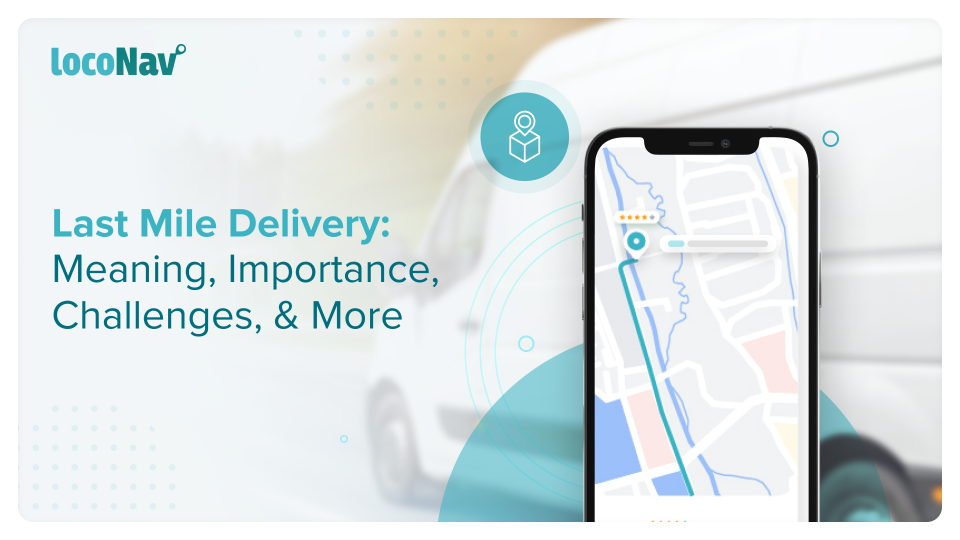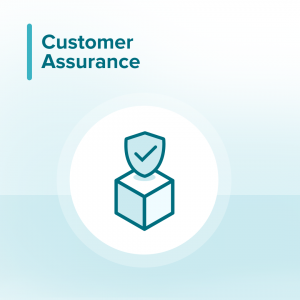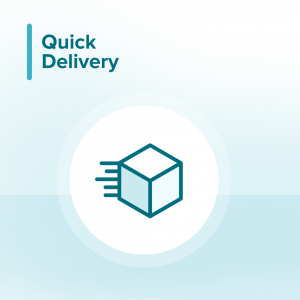

As more and more consumers turn to eCommerce for all of their purchasing requirements, quick fulfillment and delivery are no longer a “nice to have”—it’s the demand of every online purchase. And if logistics businesses and their retail partners wish to stand a chance against the oncoming danger of Amazon Prime, it must be a top priority.
In this day and age of everything remote and online, last mile delivery is often the only touchpoint between a brand and its customers, the only point where a business can truly make a lasting impression.
As a result, companies have started competing to invest in technology and novel supply chain models in order to increase shipment volume, speed deliveries, and satisfy customers – all while attempting to reduce costs. Unfortunately, same-day, last mile delivery is one of their most expensive and difficult expenses.
What is Last Mile Delivery?
Last mile delivery is the final stage of the delivery process in which a parcel is transferred from a dispatch hub to its final destination, which is typically a personal residence or a retail outlet.
This is the most important phase in the delivery cycle and firms want to guarantee that it is as effective and easy as possible. This is to meet the ever-increasing consumer demand for fast shipment, particularly in the e-commerce, food, and retail sectors. It is also the most costly leg of the travel that commodities must take to make it to their final destination.
Why is Last Mile Delivery Important?
We know what last mile delivery is, but do you really need it? Should you invest in its improvement? To comprehend the significance of last mile delivery, we must first understand why it is important. 
Customer Assurance: There is a significant risk involved whenever customers opt to put their purchased products in your hands and rely on you to deliver them on schedule.
You’ve already won half the battle if you can promise that they’ll arrive safely. However, if you give an appealing insurance benefit in the event that the item is mistreated, you are more likely to get your firm started.
This is why courier firms charge a relatively minimal insurance cost, with some including a warranty in their prices up to a particular amount in the event that the items are damaged or destroyed during transportation. This type of assurance puts your consumers at ease and, as a result, increases your trust rating.

Quick Delivery: When it comes to providing the greatest last mile delivery options, this should be at the top of your list. Customers will always choose speedy delivery service, with the majority wanting same-day delivery. So, if you can deliver the quickest and most convenient service, your brand will undoubtedly be in high demand.
![]()
Precise Shipment Tracking: The transmission of data within the last mile delivery is essential, especially for consumers who want to know the status of their delivery at all times. While typical courier services provide a vague idea of where the goods are, consumers prefer a more detailed real-time tracker.
The Last Mile Delivery Problem
Last mile delivery processes are notoriously difficult to plan. On the one hand, shipment volumes are susceptible to substantial seasonal swings; they are particularly high before Christmas, during festive shopping, and extremely low during the summer, when many families are on vacation. Delivery businesses cannot focus their processes on the peaks and must rely on other services at peak periods.
Delays in the delivery procedure are to be expected, particularly in inner-city regions, due to severe traffic congestion and limited parking space. There is also a lot of unpredictability with the clients themselves. Customers are either not present at the delivery destination, the delivery location was incorrectly addressed, or the delivery location was changed at the last minute.
Challenges in Last Mile Delivery
- Insufficient Route Planning: Route planning can be complex and difficult for novices due to the numerous variables that must be considered. Inadequate route planning results in late deliveries, increased customer annoyance, and exorbitant expenditures. This problem can be solved with effective route optimization. It not only lowers the costs associated with late delivery but also has a favorable impact on the ETA.
- Unforeseen Circumstances: Unpredictable events can interrupt last mile delivery when a packed commodity is en route. Traffic, harsh weather, and car problems are examples of uncontrollable factors. To address these, you must develop contingency plans while maintaining constant communication among your staff and with your consumers. You must have a plan of action ready so that when an emergency arises, you can immediately send the necessary solution.
- Inefficiency: Last mile delivery efficiency is being driven by the battle to ensure customer happiness. High levels of productivity are also necessary for increasing fulfilling capacity. When your process is inefficient, you will see an increase in late delivery and angry consumers, especially when dealing with huge order volumes.
- Expensive Deliveries: Last mile delivery can be costly for both consumers and businesses. Setting up a network to facilitate timely deliveries can be pricey for the latter. Furthermore, shipping and logistics firms must budget for complex routes, missed deliveries, additional stops along the delivery route, driver compensation, and fleet operation. If the initial delivery effort fails and must be rescheduled, the expenses are twice.
- Visibility Issues: The most crucial requirement for ensuring client loyalty is visibility into the delivery operations. Buyers want to know exactly where their package is and when it will arrive.
Developing efficient last mile delivery systems provides e-commerce companies with a priceless opportunity to respond to changing client needs and differentiate their goods from the competition. Those who want to succeed with an online store must address last mile delivery difficulties head-on. That necessitates the use of suitable techniques, complete transparency, and effective communication between the delivery crew and your clients.